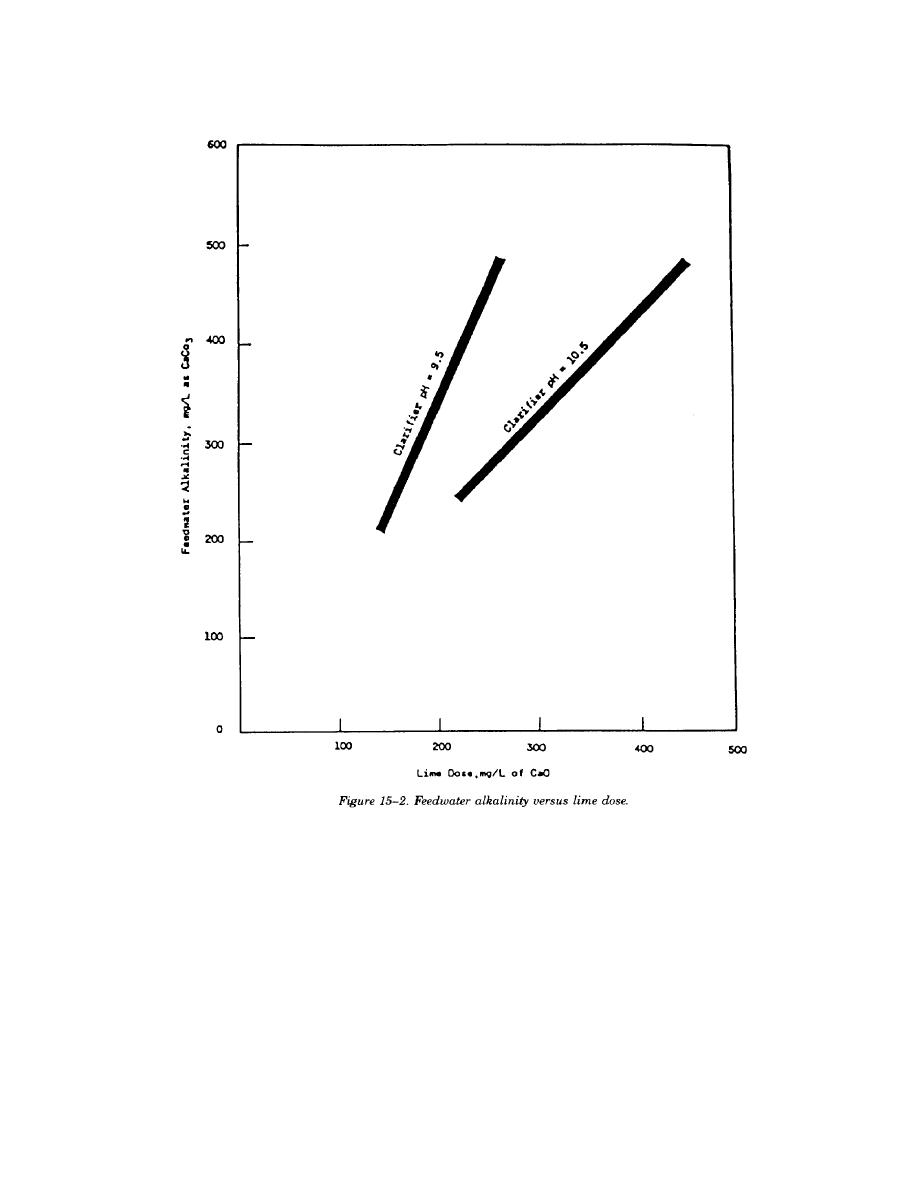
TM 5-814-3/AFM 88-11, Volume III
(2) Advantages of lime treatment. Phosphorus removal by lime addition has these advantages: no
soluble side products; improved oil, grease and scum removal; less corrosion in sludge handling systems; and
recovery of the lime. The disadvantage is that the high pH required for lime addition has a detrimental effect
on any downstream biological treatment process, including activated sludge, trickling filters and sludge
digestion.
(3) Treatment configurations. Lime treatment can be either a single-stage or a two-stage process
depending on the degree of phosphorus removal required and the alkalinity of the wastewater. A low
alkalinity of about 150 milligrams per liter as CaCO3 will yield a poorly settleable floc. A high alkalinity
requires subse-quent recarbonation (CO2 contact) to lower the ph, which in turn causes CaCO3 to percipitate,
and requires a second stage to settle out the CaCO3 sludge and provide better clarification. A high alkalinity
(200 mg/L as CaCO3), on the other hand, will yield a good settling floc at a pH as low as 9.5, thus eliminating
the need for a second stage since the CaCO3 precipitate will come out in the first stage. This process will be
considered as an alternative where the use of mineral salts would not be satisfactory.
15-15



 Previous Page
Previous Page
